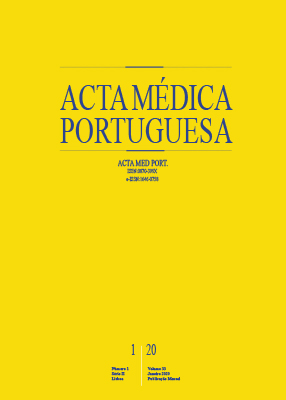Granular Cell Tumor: A Rare Breast Lesion
DOI:
https://doi.org/10.20344/amp.10279Keywords:
Breast Neoplasms/diagnosis, Breast Neoplasms/diagnostic imaging, Breast Neoplasms/pathology, Granular Cell Tumor/diagnosis, Granular Cell Tumor/diagnostic imaging, Granular Cell Tumor/pathologyAbstract
Granular cell tumors are uncommon, and are usually benign neoplasms that can mimic malignancy on breast imaging tests. These tumors can originate anywhere in the body and the breast accounts for only a few cases of all granular cell tumors. We report a case of a 54-year-old woman with a granular cell tumor of the breast presenting clinically on breast imaging (ultrasound, mammography and magnetic resonance) as a suspicious lesion. Core needle biopsy was performed for tissue diagnosis and was consistent with granular cell tumor that was confirmed in the histopathological report of the surgical specimen following a breast lumpectomy. Given the rarity of this tumor, we present this case to highlight this diagnostic hypothesis, that can be challenging and frequently confused with breast carcinoma.
Downloads
Downloads
Published
How to Cite
Issue
Section
License
All the articles published in the AMP are open access and comply with the requirements of funding agencies or academic institutions. The AMP is governed by the terms of the Creative Commons ‘Attribution – Non-Commercial Use - (CC-BY-NC)’ license, regarding the use by third parties.
It is the author’s responsibility to obtain approval for the reproduction of figures, tables, etc. from other publications.
Upon acceptance of an article for publication, the authors will be asked to complete the ICMJE “Copyright Liability and Copyright Sharing Statement “(http://www.actamedicaportuguesa.com/info/AMP-NormasPublicacao.pdf) and the “Declaration of Potential Conflicts of Interest” (http:// www.icmje.org/conflicts-of-interest). An e-mail will be sent to the corresponding author to acknowledge receipt of the manuscript.
After publication, the authors are authorised to make their articles available in repositories of their institutions of origin, as long as they always mention where they were published and according to the Creative Commons license.









